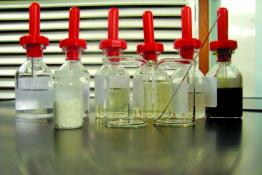Microscale gas chemistry
Issue 340 | Page 43 | Published Mar 2011
Description
This article describes how one university chemistry department adapted to these methods in the early stages of their development. There was a reduction in the quantities of chemicals being used, leading to lower costs and fewer problems with waste disposal. In addition, it was possible to consider the use of irritant gases because, should small quantities escape, they would quickly disperse in the atmosphere to low concentrations. These experiments are also quicker to perform and reliable, which improves student motivation. Complete instructions for the generation of gases and suitable experiments with these gases are provided on the authors' Microscale Gas Chemistry website.
More from this issue
Student teachers become STEM Ambassadors in a scheme that benefits both the school pupils and the students.
This article describes the use of an enquiry-based approach to the study of human evolution in a practical context, integrating role-playing,...
Chemiluminescence has long been a source of fascination for chemists and provides an engaging avenue to explore organic chemistry, chemical...



